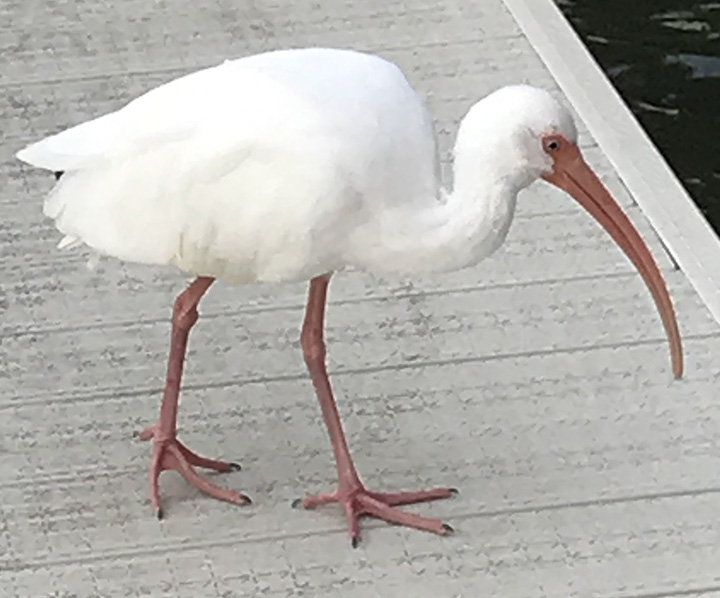

They are found in the southeastern U.S., Mexico, Central America and the Caribbean.
They live in marshes, coastal wetlands, wet forests and grasslands, cypress swamps and mangroves.
They are all white with long, red legs and black wing tips. They have a long, red, downward-curved beak with a brown tip. The face is featherless and bright pink with blue eyes.
They nest in colonies and feed in flocks, but will defend their nest from other ibis that approach too closely.
They eat insects, crayfish and other water crustaceans using their long beak to poke into the mud looking for prey. Once they snatch prey in their beak, they wash it in the water and tip up their heads to swallow it whole.
The female lays 2-3 eggs in a nest built in the trees over the water. They build them in colonies near other ibis. Both parents take turns warming the eggs (incubation) which take 3 weeks to hatch. Both also care for hatchlings, feeding them and keeping them shaded from the hot southern sun.
Kingdom: Animalia
Phylum: Chordata
Subphylum: Vertebrata
Class: Aves
Order: Ciconiiformes
Family: Threskiornithidae
Subfamily: Threshkiornithinae
Genus: Eudocimus
Species: E. albus
When you research information you must cite the reference. Citing for websites is different from citing from books, magazines and periodicals. The style of citing shown here is from the MLA Style Citations (Modern Language Association).
When citing a WEBSITE the general format is as follows.
Author Last Name, First Name(s). "Title: Subtitle of Part of Web Page, if appropriate." Title: Subtitle: Section of Page if appropriate. Sponsoring/Publishing Agency, If Given. Additional significant descriptive information. Date of Electronic Publication or other Date, such as Last Updated. Day Month Year of access < URL >.
Amsel, Sheri. "Ibis (White)" Exploring Nature Educational Resource ©2005-2024. December 13, 2024
< http://www.exploringnature.org/db/view/Ibis-White >


